"British pet Massacre": why people voluntarily killed 750,000 cats and dogs
Categories: Animals | History | World
By Pictolic https://mail.pictolic.com/article/british-pet-massacre-why-people-voluntarily-killed-750000-cats-and-dogs.htmlFear, fuss, panic, mass hysteria… All these are invariable companions of war. When the newspapers write about the approaching apocalypse, and the number of alleged victims is estimated in the millions, it is difficult to keep a sober mind and think rationally. But what happened in Britain in 1939 goes beyond all permissible limits.
In less than a month, residents of the UK have exterminated 750 thousand domestic animals with their own hands. This event went down in history as the "British Pet Massacre". Why the owners voluntarily killed their pets, read below.
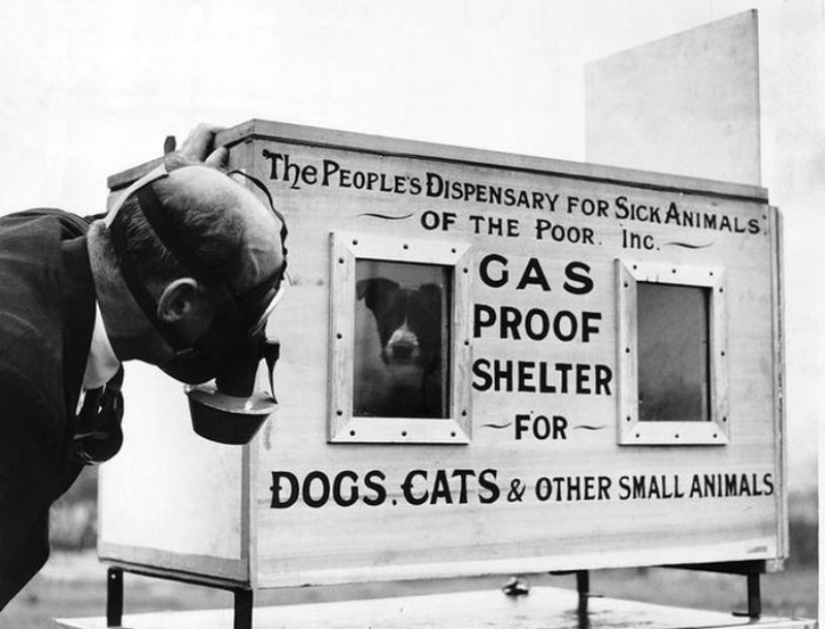
In 1939, even before the outbreak of war, the British government created a special committee on measures to protect animals from air raids. The tasks of the organization included solving various problems related to pets. Among other things, they had to determine what to do with cats and dogs when the war starts, because people will need food first of all.
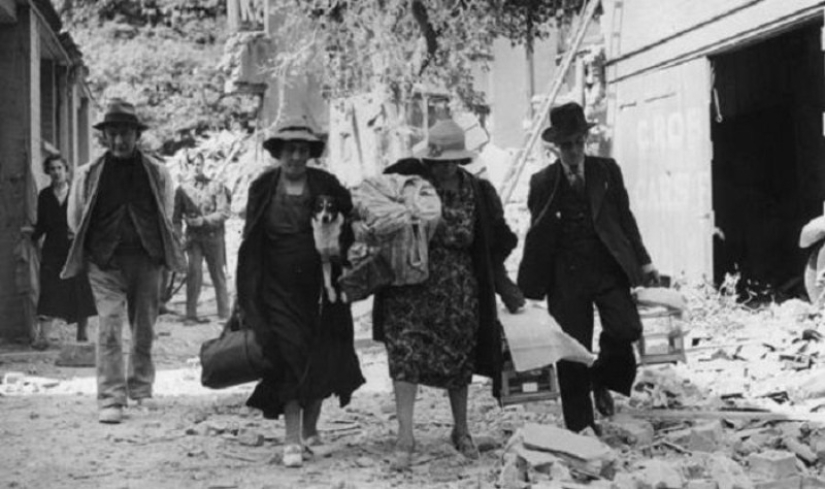
The government was sure that the available food supplies would not be enough for everyone. If people share their diet with pets, they themselves will weaken and become sluggish and unhealthy. If pets are forced to get their own food, this will lead to the emergence of flocks of stray animals on the streets. The committee faced a difficult dilemma: what to do with the "lesser brothers"?
Then NARPAC released a brochure in which pet owners were recommended to take their pets to the countryside during the war or... kill them. Moreover, the brochure even listed "the best ways to kill", among which the most humane was a pistol shot.
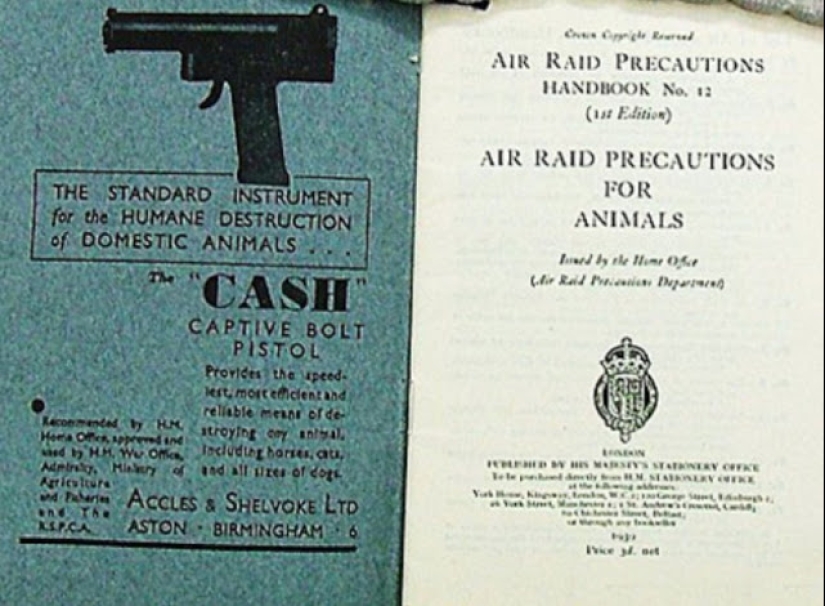
When hostilities began on September 1, 1939, many pet owners rushed to veterinary clinics to put their pets to sleep. In just a week, more than 400 thousand cats and dogs were killed by the will of their owners. Veterinary hospitals were literally littered with the bodies of domestic animals. The government even had to allocate a separate territory, which was used as a burial place for cats and dogs.
The Times newspaper wrote that the number of pets that the owners bring to slaughter is growing every day. The Royal Society for the Prevention of Cruelty to Animals was even forced to increase fines, and additional night shifts were added to clinics and the number of employees increased to cope with the increased workload.
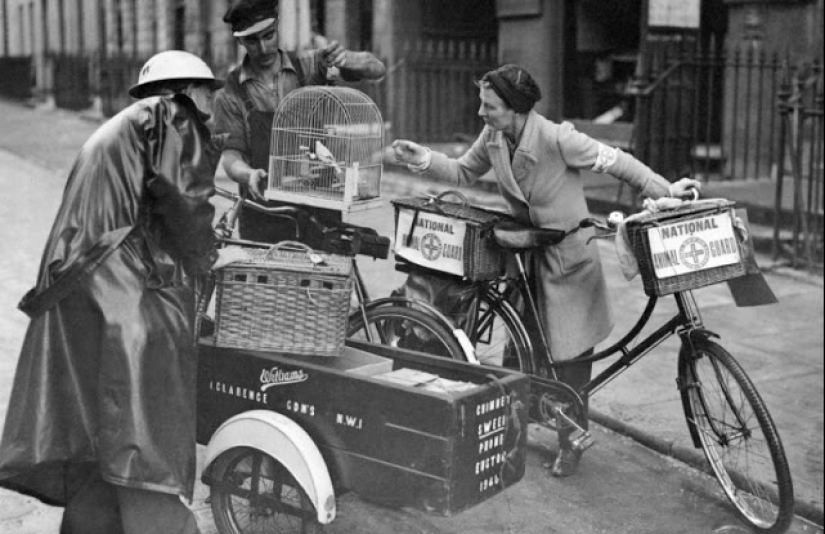
It is noteworthy that everything happened according to the will of the citizens themselves. At that time, not a single bomb fell on the territory of the UK. However, people were frightened by the prospect of mass starvation, although the government itself did not take decisions on the need to euthanize pets, but only published recommendations.
When the air strikes began in September 1940, the second wave of the "British animal massacre"started. However, this time the number of victims among pets has decreased. After the first "outbreak" of mass murders, people wrote letters to the newspapers, where they defended the right of animals to exist. They explained that cats and dogs eat mainly skins, bones and cartilage, that is, what would have to be thrown away anyway.
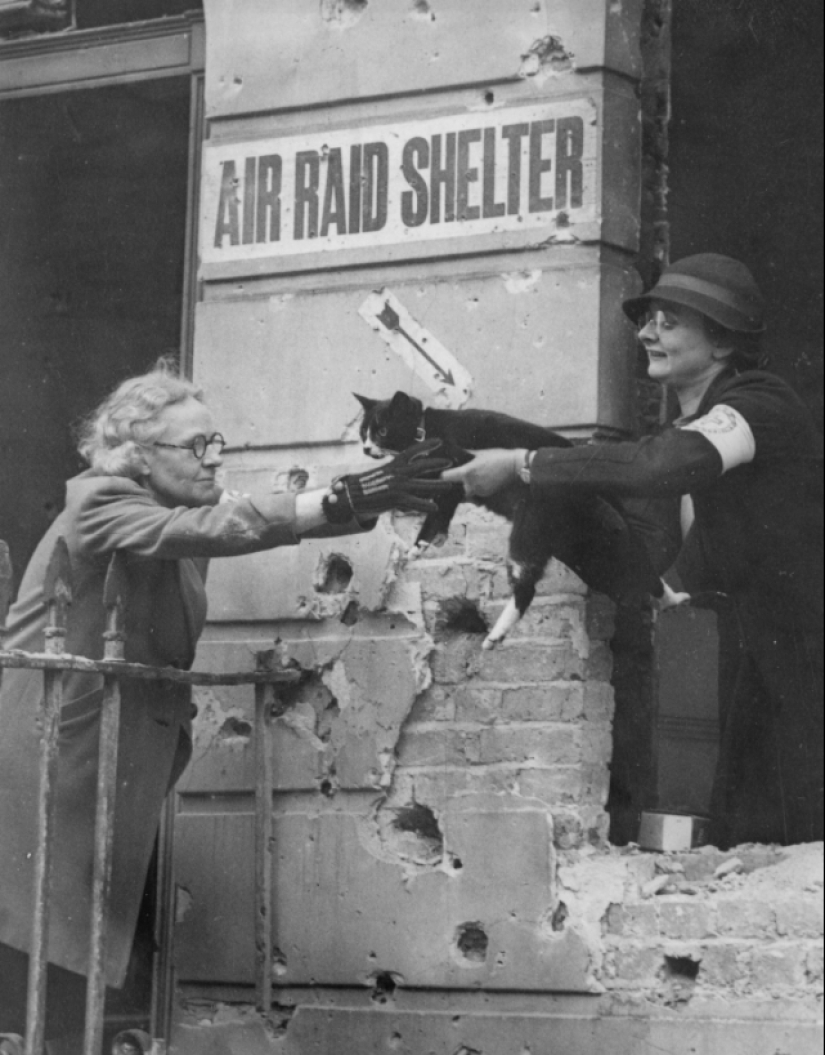
A number of animal rights organizations and individuals tried to save four-legged friends from death. They took to themselves animals that the owners refused. During the war, only one of the British shelters turned out to have 145 thousand dogs. More than 750 thousand pets could not be saved — they were killed.
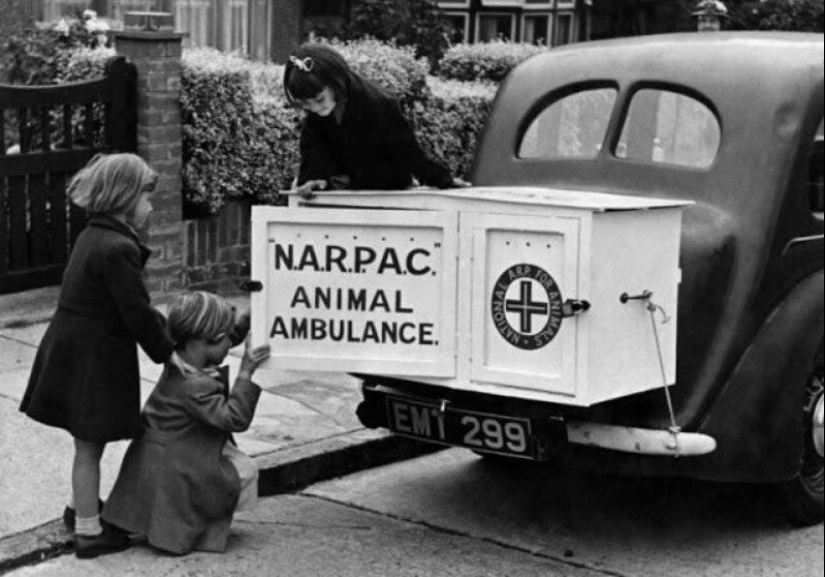
After the end of hostilities, many pet owners repented of what had happened. They accused the government of propaganda and of provoking mass hysteria.
However, the government has not introduced any regulations regulating the mandatory destruction of animals — only recommendations. The decision on what to do with the pet was left to its owner. But before the fear of lack of food and water, people lost the ability to think sensibly, so they were convinced that they were doing the right thing by killing their pets.
Keywords: Animals | War | Britain | History | Murder | Great britain | World | Pets | World war ii
Post News ArticleRecent articles

Artist Benjamin Grant pays special attention to the pictures of our planet from above. But it shows he is not the wild and ...

We are used to the deer being a big, proud and sometimes noble animal. An adult male is quite capable of standing up for himself ...
Related articles

You have a cat? Then you probably have interesting photos of your furry pet made at the right time. Well, if these images are not, ...

A dog is the only creature on earth who loves you more than himself. There is no more reliable and reliable creation. Who else will ...

Perhaps someone thinks that British women of the time of King Edward were modest and reserved, but these police photos prove the ...

Many directors add subtle hints of paintings by famous artists to their films, and they do it masterfully. They can be associated ...